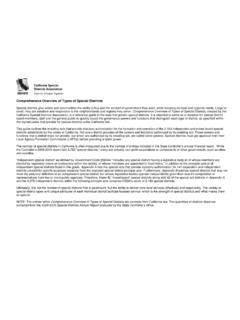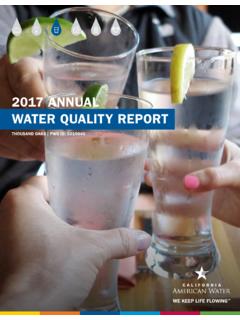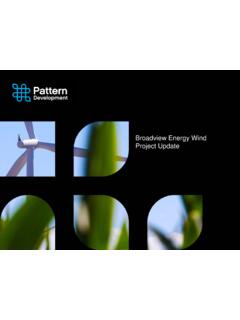Transcription of CADMUS
1 CADMUSLONG-RUN SAVINGS AND COST-EFFECTIVENESS OF HOME ENERGY REPORT PROGRAMSA uthors: M. Sami Khawaja, James Stewart, 2014/2015 ACKNOWLEDGMENTSThe authors would like to thank the following individuals for very helpful discussions and comments about earlier drafts of this paper: Ken Agnew (DNV GL), Annika Todd (Lawrence Berkeley National Laboratory), Mike Li ( Department of Energy), Scott Neuman (Opower), Alex Lopez (Opower), David Sumi ( CADMUS ), Brian Hedman ( CADMUS ), and Mehdi Maasoumy (C3). We are also grateful to Opower for providing us with publicly available evaluation reports of its home energy reports programs. This paper expresses the views of the authors and not necessarily those of the 2014 by The CADMUS Group, Inc. All rights reserved. Any unauthorized use of this material is prohibited. This document or any portion thereof may not be reproduced or used in any manner whatsoever without the express written permission of The CADMUS Group, is an employee-owned consultancy committed to helping our clients address complex challenges by applying diverse skills and experiences in a highly collaborative environment.
2 By assisting our clients in achieving their goals, we create social and economic value today and for future generations. Founded in 1983, we leverage our staff's exceptional expertise in the physical and life sciences, engineering, social sciences, strategic communication, architecture and design, law, policy analysis, and the liberal arts to provide an array of research and analytical services in the United States and OF CONTENTSI ntroduction 1 Home Energy Report Programs 2In-Treatment Savings from HERs 3 Post-Treatment Savings 5 Empirical Estimates of Savings Decay 6 Implications of Savings Decay for Lifetime HER Savings 8 Measurement of Post-Treatment Savings 9 Avoided Decay and Incremental Savings 9 Implications for EERS Goals 12 Cost-Effectiveness of HER
3 Programs 13 Estimating HER Measure Life 13 Calculation of HER Program Cost-Effectiveness 14 Conclusions and Recommendations 17 References 191 INTRODUCTIONHome energy report (HER) programs are a cornerstone of many utility energy-efficiency portfolios. These programs involve sending electronic or paper reports to residential customers, educating them about their energy use and encouraging them to conserve electricity or natural gas. The reports often include one or more of the following kinds of information: A summary of the home s recent and historical energy use Energy-efficiency tips (including utility energy- efficiency offerings) A normative comparison of the home s energy use to that of similar neighbors Offers of rewards or incentives for reducing energy useDozens of utilities in the United States send energy reports to their residential customers, and millions of utility customers receive these Recently, utilities have begun launching energy reports programs aimed at commercial customers.
4 Since utilities launched the first large-scale HER programs in 2008, the utility industry has collected considerable evidence about the savings gained through these programs. Impact studies of one vendor s programs (Opower) revealed that HERs typically resulted in average electricity savings between and of energy use during the first and second program years (Allcott, 2011; Davis, 2011; Rosenberg, Agnew, and Gaffney, 2013).2 Most Opower HER programs have been implemented as randomized control trials (RCTs), which yield unbiased and robust estimates of electricity savings and provide credible evidence of program effects. 1 The 2013 Consortium for Energy Efficiency database lists many utility HER programs; it is available for download at: http://library cee1 org/content/2013-behavior-program-summar y-public-version 2 As the largest HER service provider, Opower s programs have been studied the most Other implementers of HER programs include Aclara, C3 Energy, and Simple Energy 2 Now that many utility HER programs have been implemented for several years, we can assess savings over a longer term.
5 In particular, CADMUS reviewed studies of mature HER programs those running for three or more years to evaluate the industry knowledge about savings, both while homes continue to receive reports and (for several utilities) after homes have stopped receiving them. In the past several years, numerous utilities have conducted RCTs to estimate post-treatment electricity savings. Findings from these studies can be used to improve estimates of HER measure life and cost-effectiveness. This white paper addresses three primary questions about electricity savings from longer-running HER programs and savings after the end of treatment:1. How do HER programs perform over time, and how does the program design ( , frequency of report delivery) affect savings?2. What happens to savings when the program administrator stops sending HERs? In particular, do savings decay and, if so, how quickly? What effects result from continuing to send HERs?3. How does the persistence or decay of HER savings after treatment ends affect program savings, measure-life calculations, and cost-effectiveness?
6 Section 2 of this paper presents evidence about the performance of mature HER programs, based on CADMUS review of Opower impact studies. Section 3 presents evidence from recent studies of the persistence of savings after homes stop receiving reports. It also characterizes the savings impacts from continuing to send HERs after the first program Section 4, CADMUS reviews existing methodologies for estimating HER program cost-effectiveness and proposes an alternative methodology that incorporates new findings about the persistence of savings after the end of treatment. This methodology was inspired by recent research demonstrating that HER savings persist after treatment ends (Allcott and Rogers, 2014; Brattle, 2012; Integral Analytics, 2012; KEMA, 2012; NMR Group, Tetra Tech, and Allcott, 2013). The final section presents conclusions and recommendations for future ENERGY REPORT PROGRAMSMany utilities send HERs to their residential customers.
7 The reports provide education about energy use and encourage residents to save energy, both through changing energy-use behaviors (such as by turning off lights in unoccupied rooms or adjusting thermostat settings) and through upgrading home appliance efficiencies ( , air conditioners and refrigerators) and home envelopes ( , windows, insulation). HER programs can differ along a number of dimensions, such as: The type of fuel targeted for savings (electricity or natural gas) Program populations ( , high-energy users, electric-heat customers) Report frequency (the number of reports per home, per year) The duration of treatment (length of time since the first reports were received) The report contents3 That said, many programs share the following features: Implemented as an RCT, providing highly credible savings estimates Offered on a large scale (by energy-efficiency standards), targeting thousands of utility customers Provides customers with an analysis of their historical consumption, energy-savings tips, and energy efficiency in comparison to neighboring homes, either through personalized home reports or a web portal Implementation by independent third-party vendor Includes an opt-out option for customers to decline participation/receiving reports In-Treatment Savings from HERs HER programs save energy while homes are receiving reports (in-treatment savings) and, as we describe in the next section, after homes stop receiving reports (post-treatment savings).
8 This section of the paper is focused on the current industry knowledge regarding in-treatment savings from HER programs; the following section discusses post-treatment savings. Figure 1 shows the typical time path of kWh savings per home while the home receives energy reports. The in-treatment savings for each year are indexed to savings in the last year of treatment. We developed these curves by conducting a meta-analysis of savings reported in independent evaluations of Opower programs; the solid line represents savings from programs running for three or more years, while the dashed curve represents normalized savings for programs that ran for four or more Most of these programs achieved savings between and per year during the first and second Figure 1. kWh Savings per Home by Treatment Duration (Indexed to Last Year Evaluated)Programs Running Four Years73%57%87%93%96%Program YearNormalized Savings per Home100%80%60%40%20%0%01234 Programs Running Three YearsNote: The authors developed these curves based on analysis of the average annual electricity savings per home from Opower HER programs running for three years (solid curve) or four or more years (dashed), including programs for Ameren-Illinois ( CADMUS , 2012), Ameren-Illinois (Opinion Dynamics, Navigant, and Michaels Engineering, 2012), Sacramento Municipal utility District (SMUD; Integral Analytics, 2012), ComEd (Navigant, 2012), Puget Sound Energy (KEMA, 2010, 2012, and 2013), PPL Electric ( CADMUS , 2014), National Grid (Opinion Dynamics, Navigant Consulting, and Evergreen Economics, June 2013).
9 Figure 1 shows that the electricity savings per home from HERs increased over the first three or four years of treatment. In each year, savings are assessed relative to a control group. Three savings phases become evident: 1. First, a ramp-up occurs during the first six to 12 months of program participation. Savings increase rapidly during this phase, as utility customers assimilate HER information and begin to conserve energy. 2. Over the next 12 to 24 months, savings continue to increase, but at a lower rate than during the first 12 months. During this phase, utility customers begin to form energy-savings habits (Allcott and Rogers, 2014). 3 Three of the programs we assessed have been evaluated for four years 4 The difference in slope between savings for programs having run three years versus four years is likely due to random noise These differences do not necessarily indicate that participants in programs running four or more years increased their saving more rapidly than those participants in programs running for just three years 43.
10 In the last phase (program years 3 and 4), savings begin to level off. Savings maintain or increase at a very slow rate, while participants continue to receive reports that reinforce conservation habits. There is no evidence to indicate that average savings decrease in later treatment years because customers tire of or stop paying attention to the reports. However, there is little empirical evidence as to what happens to savings after the fourth year of treatment. During our review of Opower HER programs, we identified a number of other savings patterns that are not evident in Figure 1. These include: Energy savings follow a seasonal pattern: they tend to be higher during winter and summer, when the demand for electric space heating and cooling is greatest (Summit Blue, 2009; CADMUS , January 2014; Power System Engineering, 2010; Navigant, 2011; Allcott, 2011; Opinion Dynamics, CADMUS , Navigant, and Michaels Engineering; DNV-GL, 2014).








